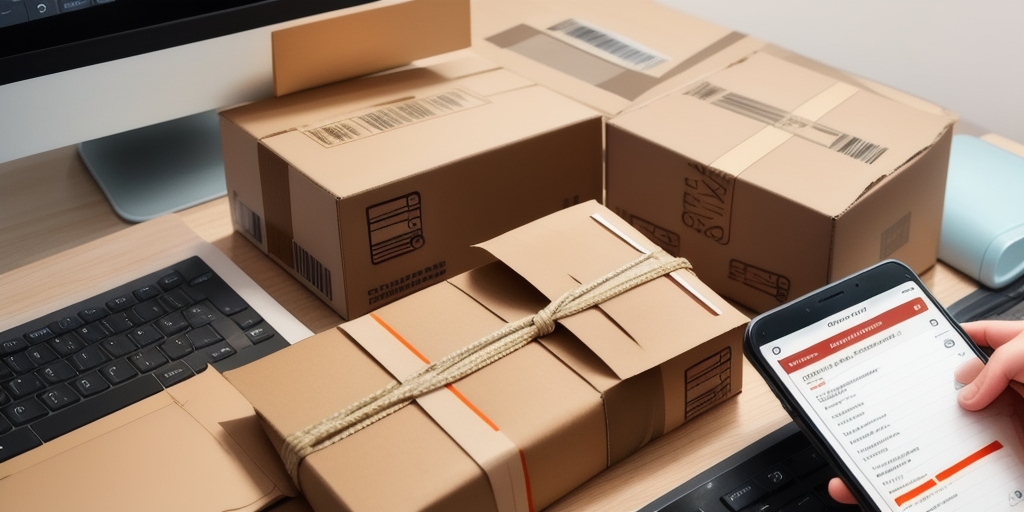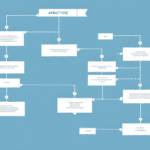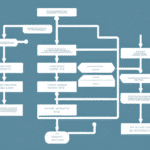Creating a Fulfillment Flowchart Without a Shipping Solution
As a business owner, you know that your fulfillment process is one of the most critical elements of your operation. It ensures that your customers receive their orders on time, in good condition, and with minimal hassle. However, if you're just starting and can't yet afford a shipping solution, creating a fulfillment flowchart without one is still possible.
Understanding Your Fulfillment Process
The first step in creating a flowchart for your fulfillment process is to understand precisely how it works. Analyze your current method of delivering products to customers and outline each step of the process. This could include:
- Receiving the order
- Processing payment
- Picking and packing the items
- Shipping the order
- Handling returns and exchanges
Document every step in detail as this will form the foundation of your flowchart. According to a Small Business Administration report, a well-defined fulfillment process can enhance efficiency by up to 30%.
Analyzing Process Efficiency
Once you have documented each step, analyze the efficiency of each one. Identify any bottlenecks or areas where the process could be improved. For example, if it takes too long to pick and pack items, consider reorganizing your workspace or implementing new technologies to streamline these tasks.
The Importance of a Flowchart in Your Fulfillment Process
A fulfillment flowchart is an essential tool for any business as it provides a visual representation of the steps involved in your fulfillment process. By breaking down the process into smaller, manageable parts, you can:
- Identify bottlenecks and inefficiencies
- Optimize operations for better performance
- Map out inventory movement
- Determine optimal stock levels
Furthermore, a flowchart helps in risk management by highlighting potential areas where errors or delays may occur, allowing you to take proactive measures to prevent them.
Identifying Bottlenecks in Your Fulfillment Process
One of the significant benefits of creating a fulfillment flowchart is the ability to identify bottlenecks within your process. Common bottlenecks include:
- Inventory management issues
- Order processing delays
- Packing and shipping inefficiencies
By documenting these issues on your flowchart, you can prioritize improvements and adopt a systematic approach to problem-solving. Addressing these bottlenecks not only improves operational efficiency but also enhances customer satisfaction by ensuring timely and accurate order fulfillment.
Research from the Supply Chain Management Review indicates that businesses addressing bottlenecks can reduce fulfillment times by up to 25%.
Analyzing Your Inventory Management
Effective inventory management is vital to any successful fulfillment process. Poor inventory management can lead to stockouts, delays, and damaged customer relationships. Your fulfillment flowchart should track inventory from arrival at your facility to dispatch to the customer, highlighting areas where stock may get stuck.
Key aspects to consider include:
- Inventory Turnover Rate: Measures how quickly inventory is sold and replaced. A high turnover rate indicates efficient inventory management, while a low rate may signal excess stock or slow-moving products.
- Safety Stock: Maintaining additional stock to prevent stockouts during unexpected demand spikes.
According to a study by Harvard Business Review, optimizing inventory management can improve overall profitability by up to 20%.
Choosing the Right Shipping Strategy for Your Business
While this guide focuses on creating a fulfillment flowchart without a dedicated shipping solution, understanding different shipping strategies is crucial for future scalability. When you're ready to invest in a shipping solution, consider factors such as:
- Cost-effectiveness
- Delivery speed
- Integration capabilities with your existing systems
- Customer support and reliability
Integrating a shipping solution into your fulfillment flowchart can further optimize your shipping processes and enhance overall efficiency.
For more insights, refer to the UPS Shipping Solutions which offer a range of options tailored to different business needs.
How to Create a Fulfillment Flowchart Without a Shipping Solution
Creating a fulfillment flowchart without a shipping solution involves mapping out each step of your process meticulously. Here's how to do it:
- Start with Order Receipt: Document how orders are received, whether through an online platform, email, or phone.
- Payment Processing: Outline the steps involved in verifying and processing payments.
- Inventory Allocation: Detail how inventory is allocated to each order.
- Picking and Packing: Describe the process of selecting items from inventory and packing them for shipment.
- Shipping: Even without a dedicated shipping solution, outline the methods you use to deliver orders, such as postal services or local courier partners.
- Handling Returns: Include steps for managing returns and exchanges to ensure customer satisfaction.
Using tools like Lucidchart can help you create detailed and professional flowcharts. Regularly review and update your flowchart to reflect any changes in your process.
Tips for Streamlining Your Fulfillment Process
Optimizing your fulfillment process can lead to significant improvements in efficiency and customer satisfaction. Here are some actionable tips:
- Simplify Processes: Reduce the number of steps involved to minimize complexity and potential errors.
- Automate Where Possible: Implement automation tools for tasks like inventory tracking and order processing to save time and reduce manual errors.
- Standardize Packaging: Use standardized packaging materials to speed up the packing process and reduce costs.
- Employee Training: Provide regular training to ensure your team is well-versed in best practices and any new processes.
- Leverage Analytics: Utilize data analytics to identify trends, inefficiencies, and areas for improvement.
Establishing clear communication channels with suppliers and customers also plays a critical role in streamlining your fulfillment process. Implementing a real-time tracking system can keep customers informed about their orders, enhancing transparency and trust.
For more strategies, the Forbes Technology Council offers valuable insights on automating fulfillment processes.
Maximizing Efficiency Without a Shipping Solution
Even without a dedicated shipping solution, you can enhance the efficiency of your fulfillment process by:
- Prioritizing Best-Selling Products: Store top-selling items in easily accessible locations to expedite picking.
- Using Inventory Management Software: Implement software solutions to manage inventory levels, automate reorder processes, and prevent stockouts.
- Organizing Your Workspace: Maintain a clean and organized workspace to facilitate faster order processing.
- Standardizing Packaging: Use consistent packaging methods to reduce preparation time.
Additionally, consider outsourcing certain tasks such as packaging to third-party services to save time and resources.
Studies from Business News Daily highlight that organized and efficient fulfillment processes can lead to a 15% increase in order processing speed.
Common Mistakes to Avoid When Creating a Fulfillment Flowchart
When developing a fulfillment flowchart, it's essential to avoid common pitfalls that can hinder your process:
- Overcomplicating the Flowchart: Keep it simple and clear to ensure all team members can understand and follow it.
- Omitting Steps: Ensure every step of the fulfillment process is documented to avoid gaps and inefficiencies.
- Ignoring Communication: Effective communication is vital. Failure to incorporate it into your flowchart can lead to misunderstandings and errors.
- Neglecting Regular Reviews: Regularly update your flowchart to reflect changes in your process and incorporate feedback from your team.
- Not Considering Scalability: Design your flowchart to accommodate future growth and increased order volumes.
Incorporating feedback from employees can also help identify overlooked areas and improve the overall effectiveness of your flowchart.
For more on common fulfillment mistakes, refer to the Entrepreneur Guide.
Benefits of Implementing a Fulfillment Flowchart
Implementing a fulfillment flowchart offers numerous benefits, including:
- Enhanced Team Collaboration: Clear processes facilitate better teamwork and communication.
- Improved Order Accuracy: Reduces errors in order processing and fulfillment.
- Increased Efficiency: Streamlined processes lead to faster order fulfillment.
- Better Tracking: Allows for accurate monitoring of order status at each stage.
- Reduced Costs: Identifies and eliminates inefficiencies, leading to cost savings.
Additionally, a flowchart helps in training new employees by providing a clear overview of the fulfillment process, ensuring consistency and reliability in operations.
According to the McKinsey & Company, businesses that utilize structured fulfillment processes experience up to a 20% increase in productivity.
Future-Proofing Your Business with a Fulfillment Flowchart
Creating a fulfillment flowchart is an investment in your business’s future. It serves as a foundational tool that enables you to:
- Optimize operations for current efficiency
- Adapt to new products or services seamlessly
- Scale your operations to meet growing demand
- Integrate new shipping solutions as your business evolves
By regularly updating your flowchart to reflect changes in your business, you ensure that your fulfillment process remains efficient and capable of supporting growth. This proactive approach allows you to respond swiftly to market changes and customer needs, maintaining a competitive edge.
Investing in tools and technologies that support your fulfillment flowchart, such as inventory management systems and automation software, can further enhance your ability to scale effectively.
For strategies on future-proofing your fulfillment process, the Harvard Business Review provides comprehensive guidelines.
Conclusion
By following the guidelines in this article, you can create a comprehensive and effective fulfillment flowchart that will help you streamline your operations, reduce errors, and enhance your bottom line. A well-designed flowchart not only improves efficiency but also prepares your business for future growth and challenges.
Start creating your fulfillment flowchart today to lay the groundwork for a successful and scalable business operation. Proactively managing each step of your fulfillment process will lead to happier customers, increased sales, and a stronger market position.




















